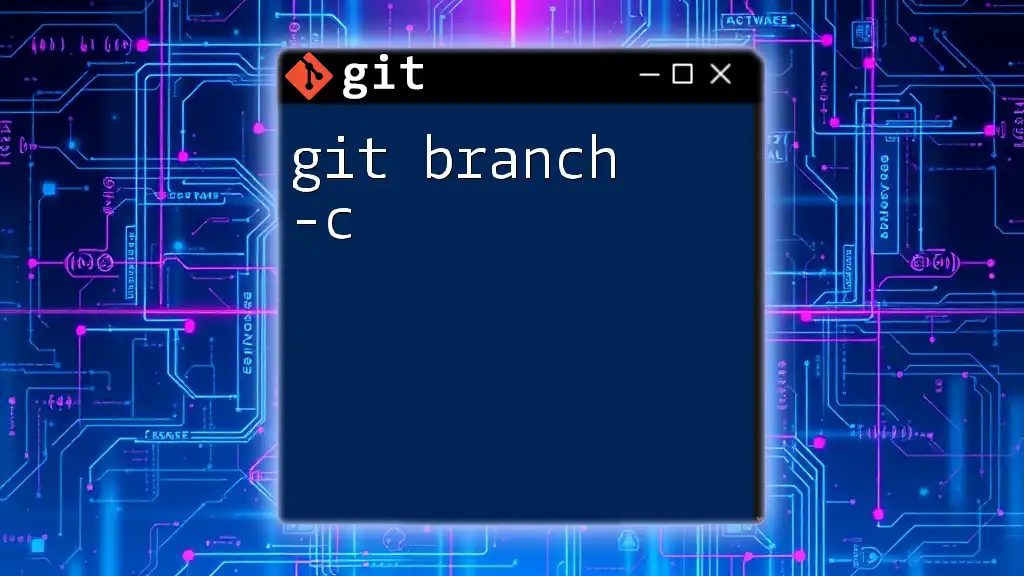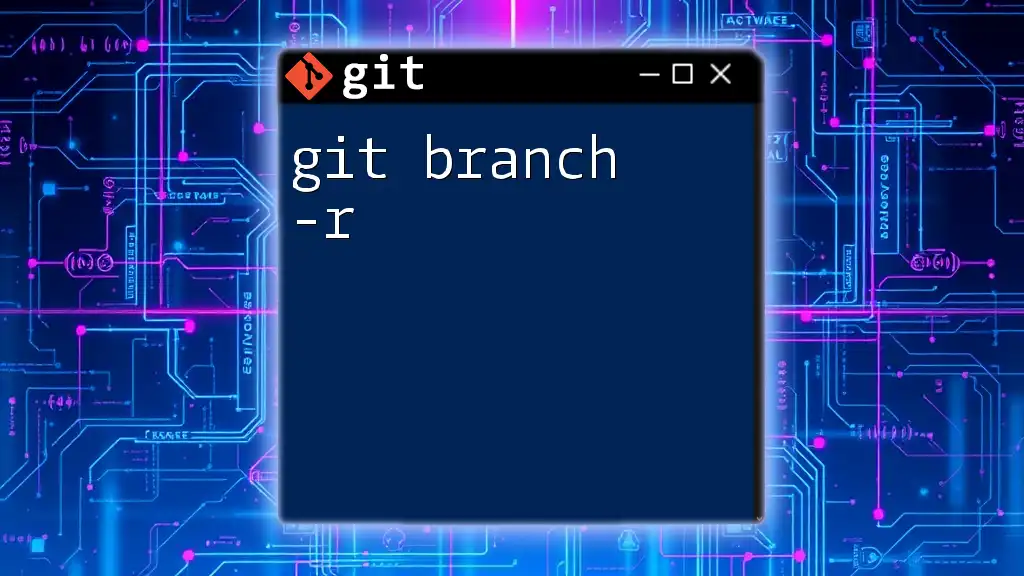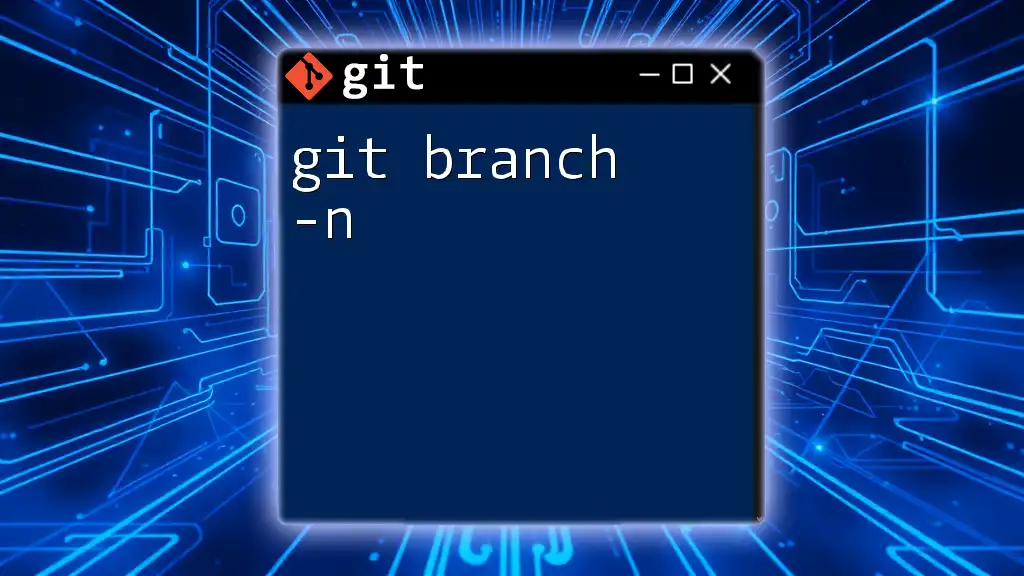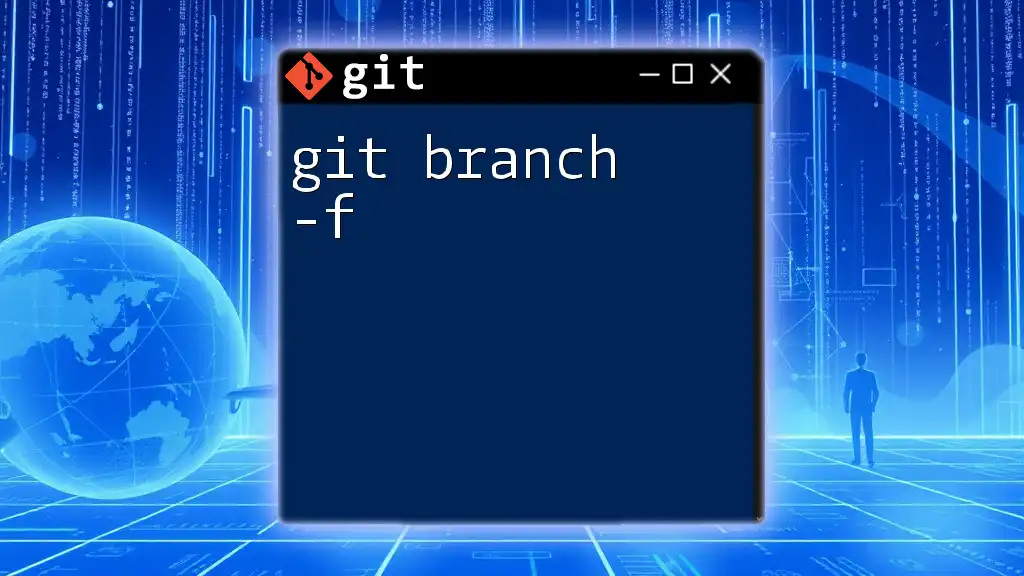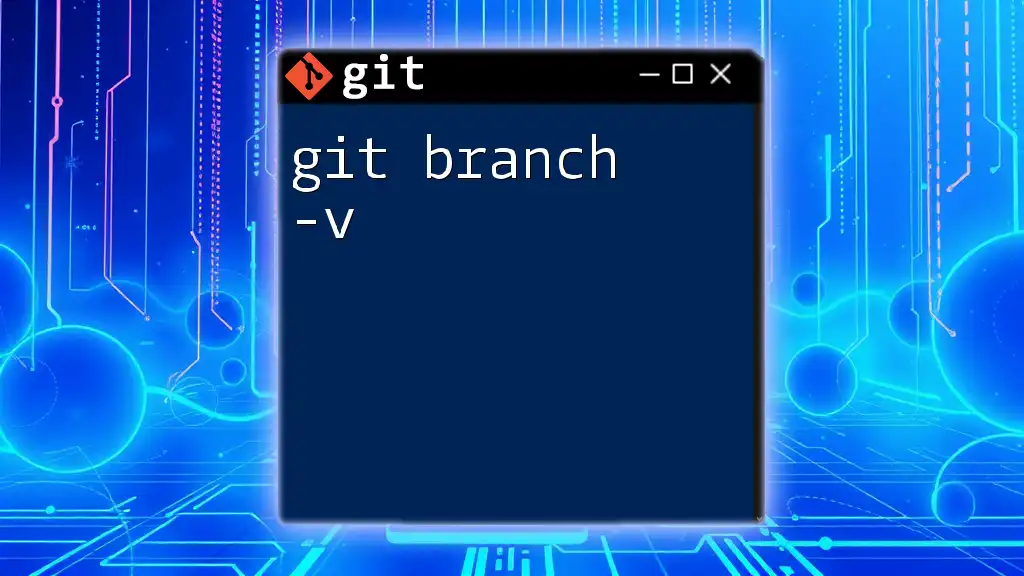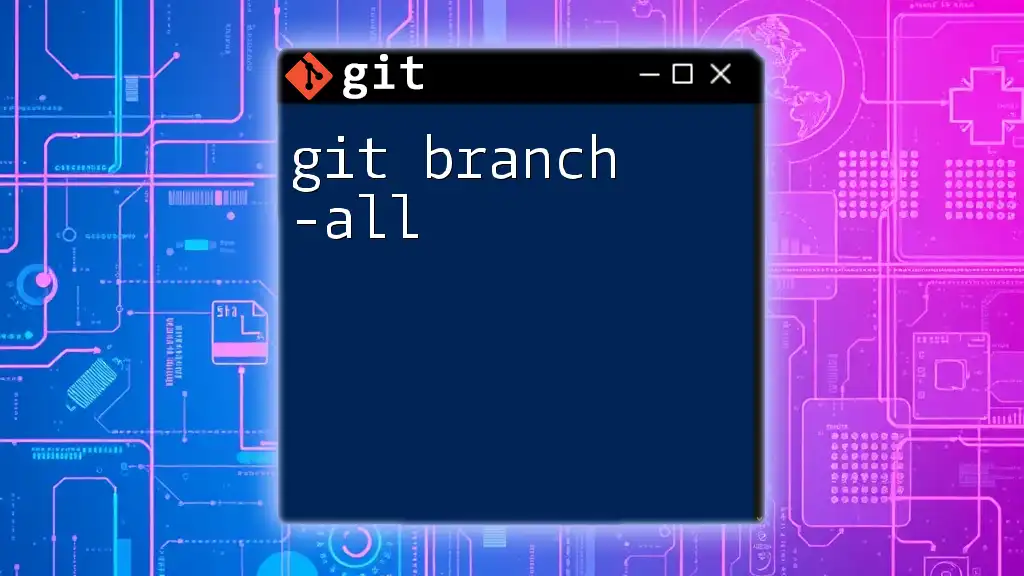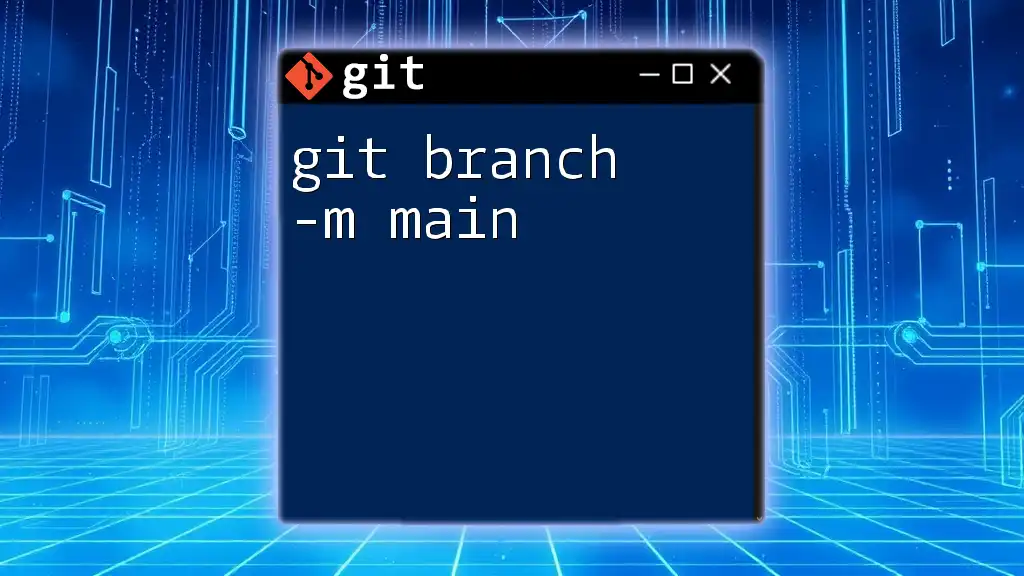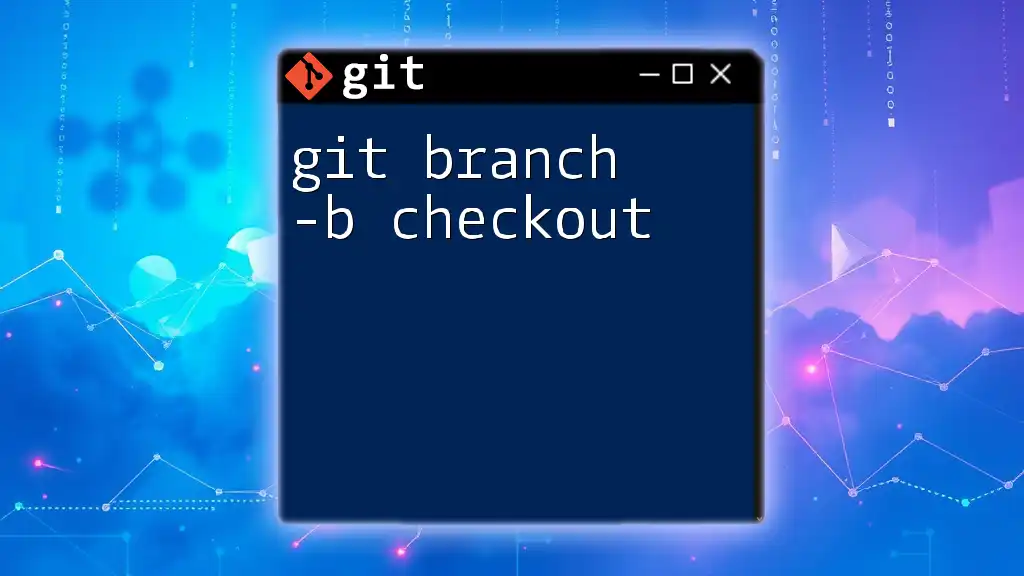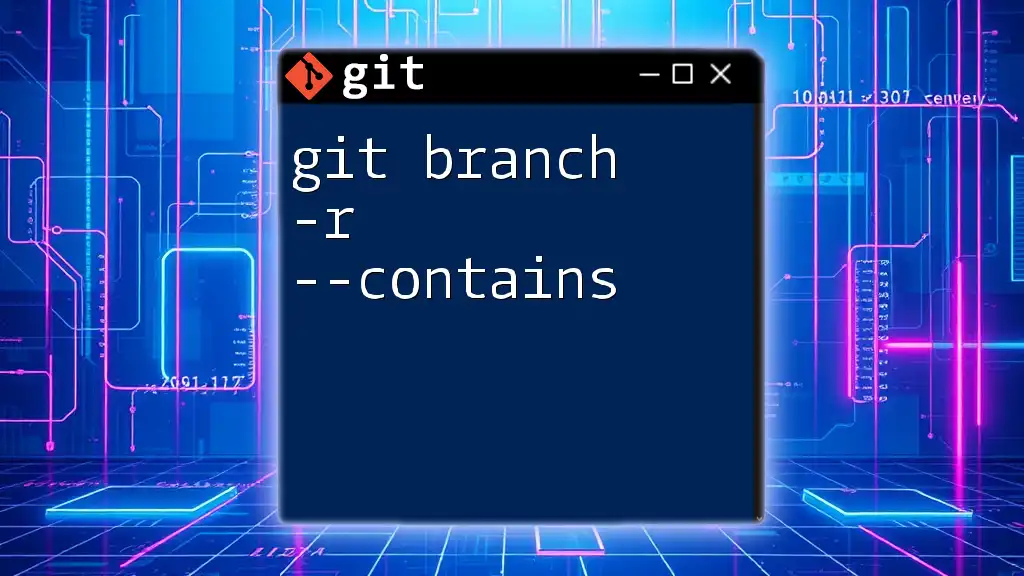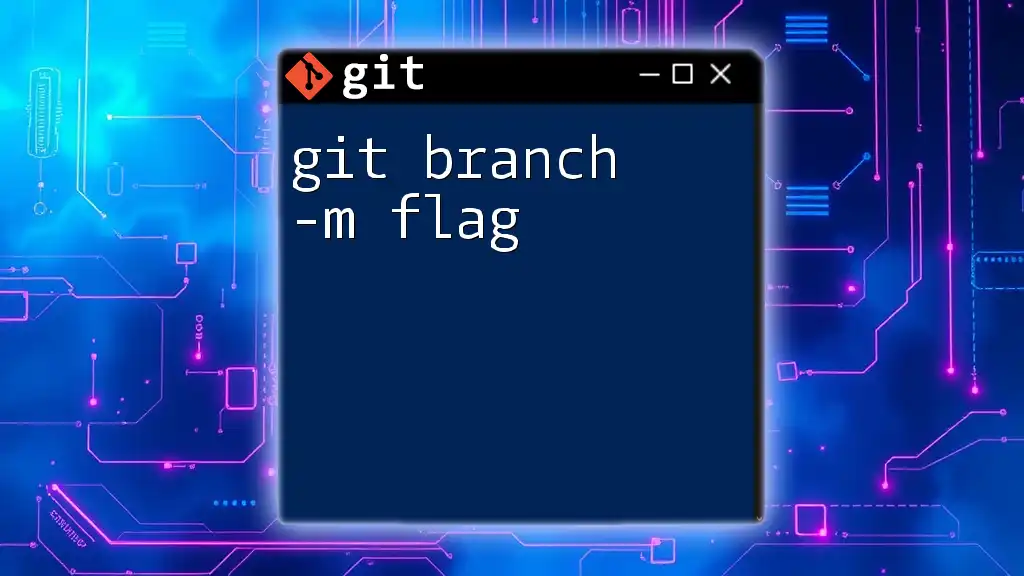The `git branch -c` command is a shorthand way to create a new branch and switch to it, combining the functionality of `git branch` and `git checkout`.
git branch -c new-branch-name
Understanding Branches in Git
What is a Branch?
In Git, a branch serves as an independent line of development. You can think of it as a separate workspace where you can make changes without affecting the primary codebase. Branches allow multiple developers to work concurrently on different features or fixes while keeping the main code stable and functional.
Types of Branching Strategies
Choosing the right branching strategy is crucial for maintaining an efficient workflow in Git. Here are some common strategies:
- Feature Branching: Developers create branches for specific features. Once a feature is complete, it can be merged back into the main line (usually `main` or `master`). This isolates new features and helps in testing them thoroughly before production.
- Release Branches: Used to prepare for production releases. While the main branch may receive new features, the release branch focuses on bug fixes, performance tuning, and other final adjustments.
- Hotfix Branches: When you need to address a bug in production, hotfix branches are created from the main branch. This ensures urgent issues can be fixed quickly without delaying new development.
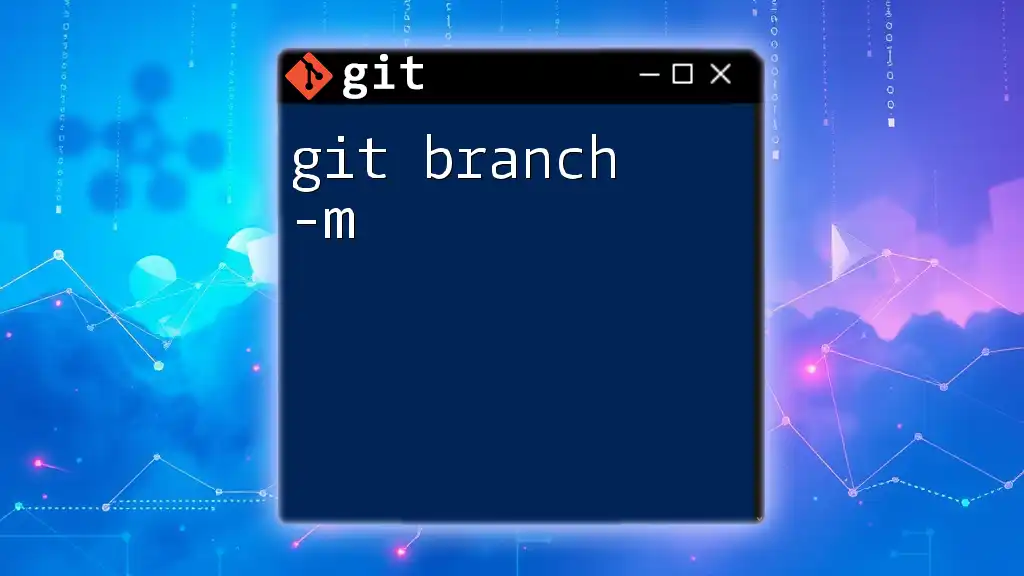
The `git branch` Command
Overview of `git branch`
The `git branch` command is central to managing project versions in Git. It allows you to create, delete, and list branches within your repository. Understanding how to navigate branches effectively is key to leveraging Git’s full potential.
Syntax of `git branch`
The general structure of the command is:
git branch [options] [branch-name]
This format allows you to specify various tasks you wish to perform with branches, along with any necessary options.
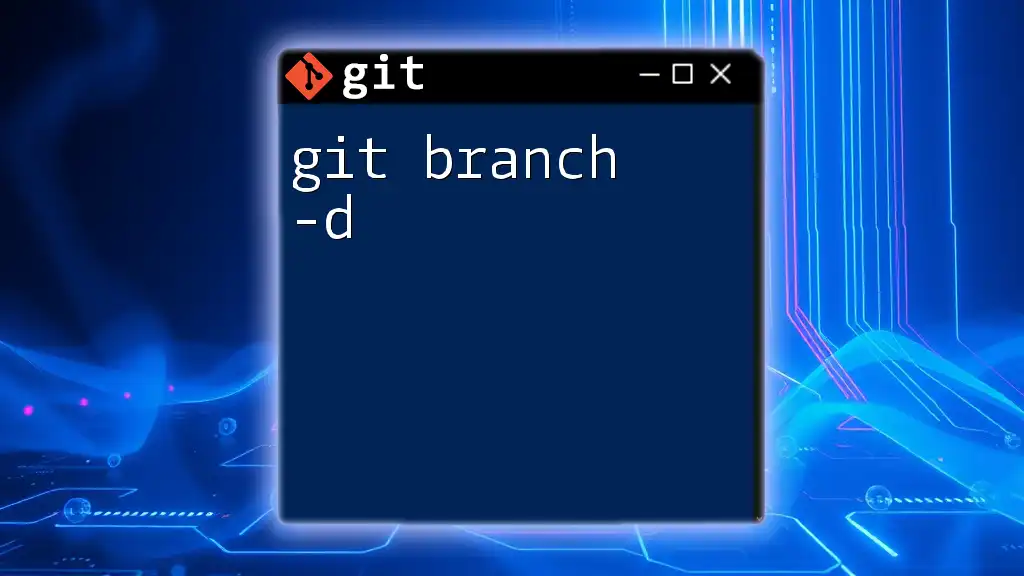
What is `git branch -c`?
Explanation of the `-c` Flag
The `-c` flag stands for 'create.' It introduces a faster way to create a new branch from the current branch. This command is particularly useful when you want to work on a new feature or fix but want to make sure you are working off the latest changes.
Use Case Scenarios
There are various scenarios where `git branch -c` can be advantageous. For example:
- When initiating a new feature development, using `git branch -c` ensures your new branch is based on the most recent changes, thus minimizing potential merge conflicts.
- If you are in the middle of developing a feature but find that a new opportunity arises, you can quickly create another branch to capitalize on it without losing your current work.
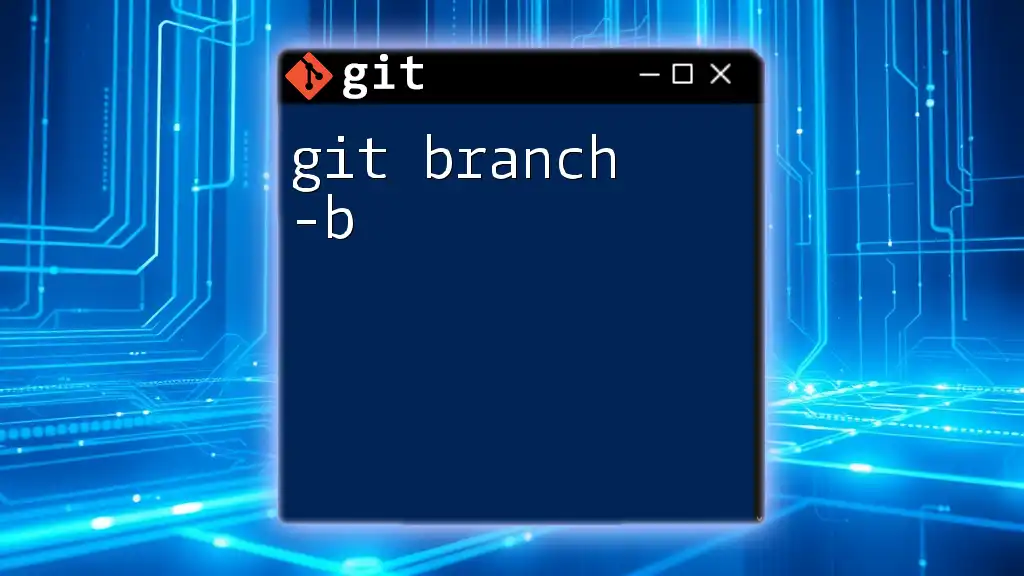
Using `git branch -c` in Practice
Basic Command Usage
To create a new branch, you can use the following command:
git branch -c new-feature
This command creates a new branch called `new-feature` based on the current HEAD, allowing you to start implementing changes specific to that feature immediately.
Creating a Branch from a Specific Commit
Syntax
You can also create a branch from a specific commit using this syntax:
git branch -c <branch-name> <commit-hash>
Example
Suppose you want to create a branch named `feature-branch` from a specific commit with the hash `0d1d8de`, you can execute the following command:
git branch -c feature-branch 0d1d8de
This creates the `feature-branch`, allowing you to work on that specific point in the project's history. This is especially helpful if you want to branch off a version of the code before recent changes were made.
Best Practices for Using `git branch -c`
When working with branches, applying best practices can optimize your workflow:
- Use clear naming conventions for branches, such as `feature/login` or `bugfix/issue-123`, to easily identify their purposes.
- Regularly delete branches that are no longer needed to keep your repository organized and reduce confusion.
- Always ensure your current branch is up-to-date before creating a new branch to avoid unexpected behaviors later on.

Common Errors and Troubleshooting
Common Error Messages
While using `git branch -c`, you may encounter some common errors:
- Error: A branch named 'new-feature' already exists: This occurs if you are trying to create a branch with a name that’s already in use. Consider using `git branch -m` to rename.
- Error: You must be on a branch to create a new branch: This indicates you might be in a detached HEAD state. To resolve this, ensure you are on a valid branch before executing `git branch -c`.
Debugging Tips
Before attempting to create a new branch, it's a good idea to check your current state by listing existing branches:
git branch
This command will let you see whether the branch name you want to create is already in use, allowing you to avoid conflicts before they arise.
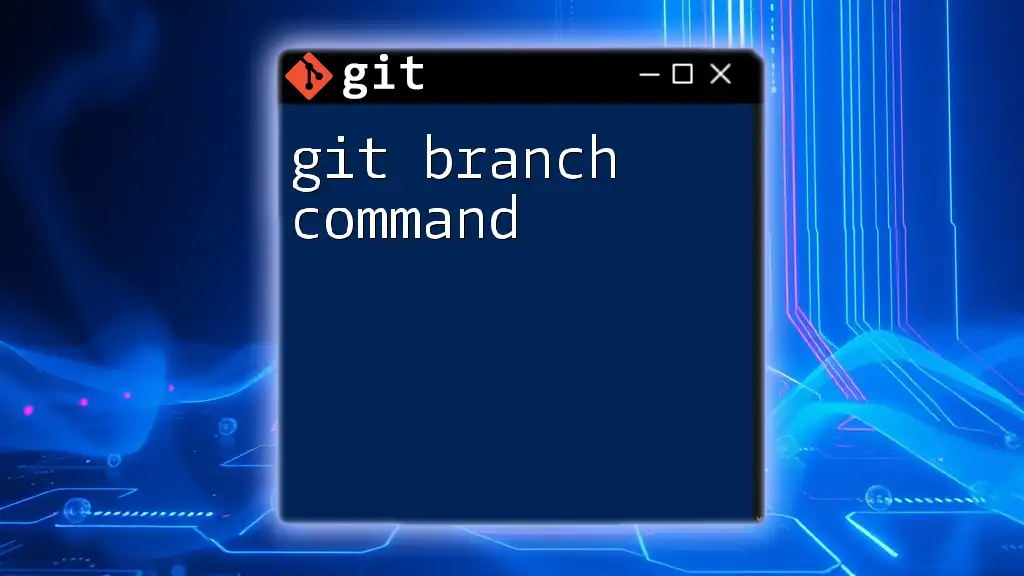
Conclusion
Utilizing `git branch -c` effectively can significantly enhance your workflow in Git. By understanding how to create and manage branches, especially in collaborative settings, you can more efficiently implement features, fix bugs, and maintain a clean codebase.
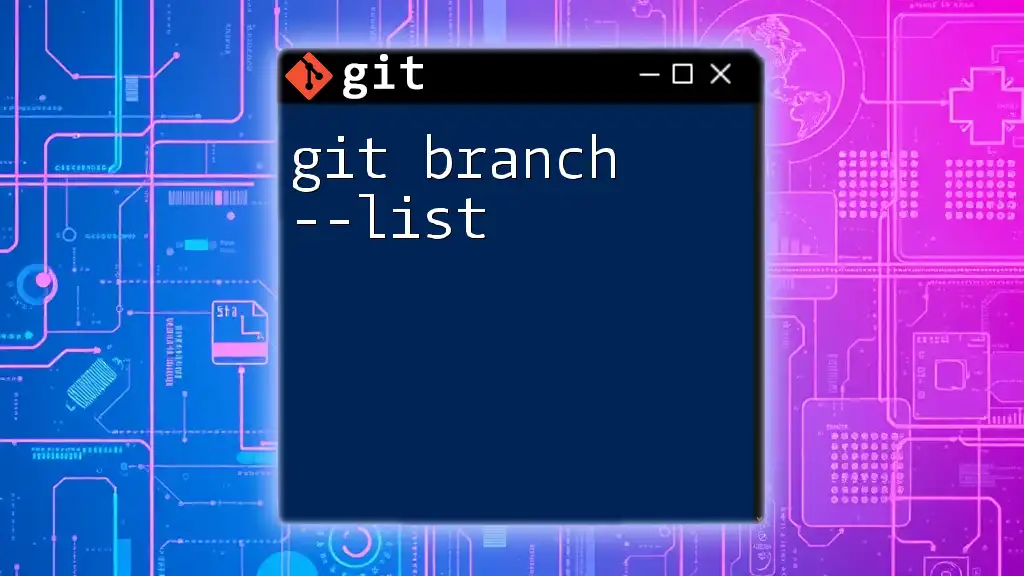
Additional Resources
Recommended Git Resources
To deepen your understanding of Git and version control, consider exploring the following resources:
- Pro Git by Scott Chacon and Ben Straub
- The official [Git Documentation](https://git-scm.com/doc)
- Online courses and tutorials focused on Git practices.
Online Communities
Engage with others by joining forums such as:
- Git-specific channels on Slack or Discord
- Stack Overflow, where you can ask questions and share knowledge
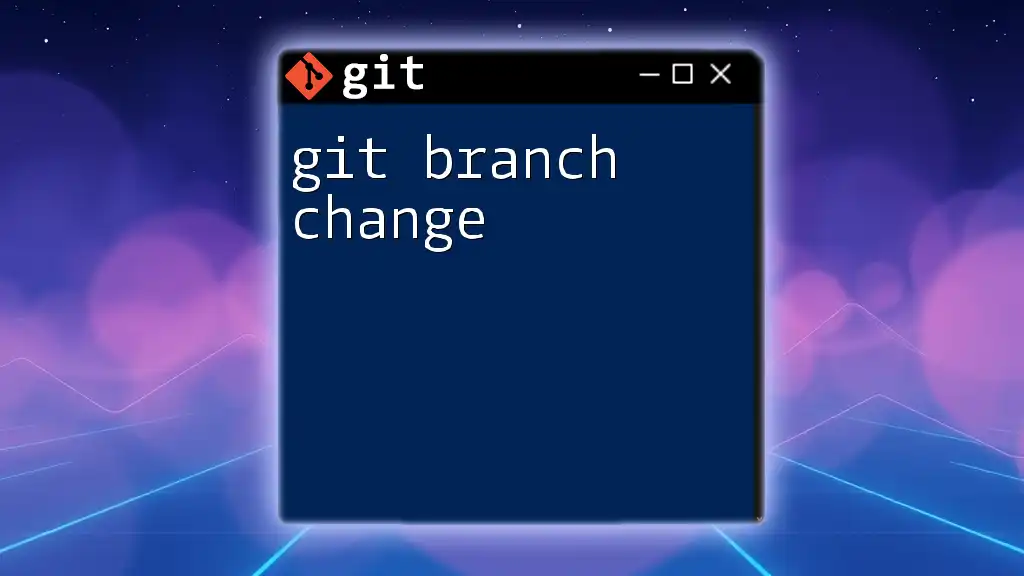
Call to Action
Start incorporating the `git branch -c` command into your workflow today! For more in-depth training and resources on mastering Git commands, explore our services and join our community of learners.

